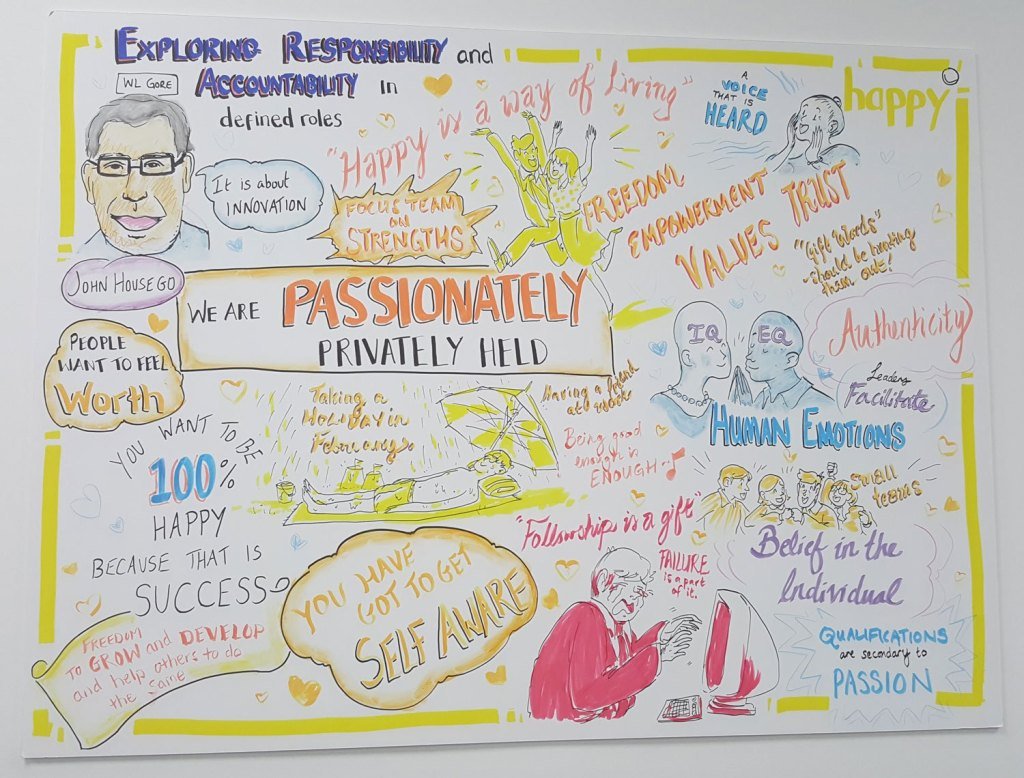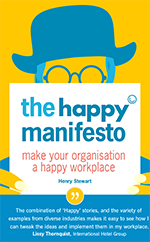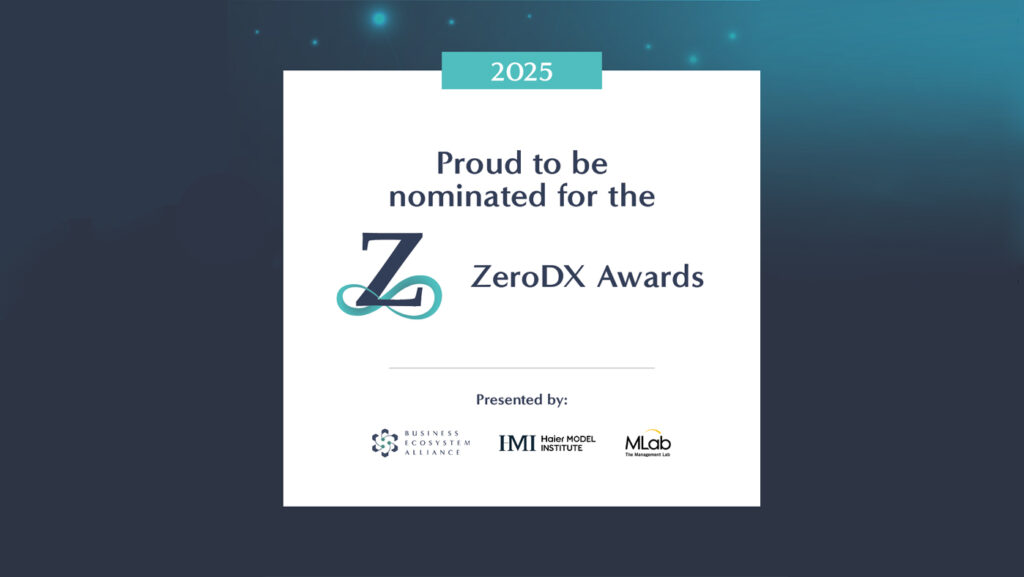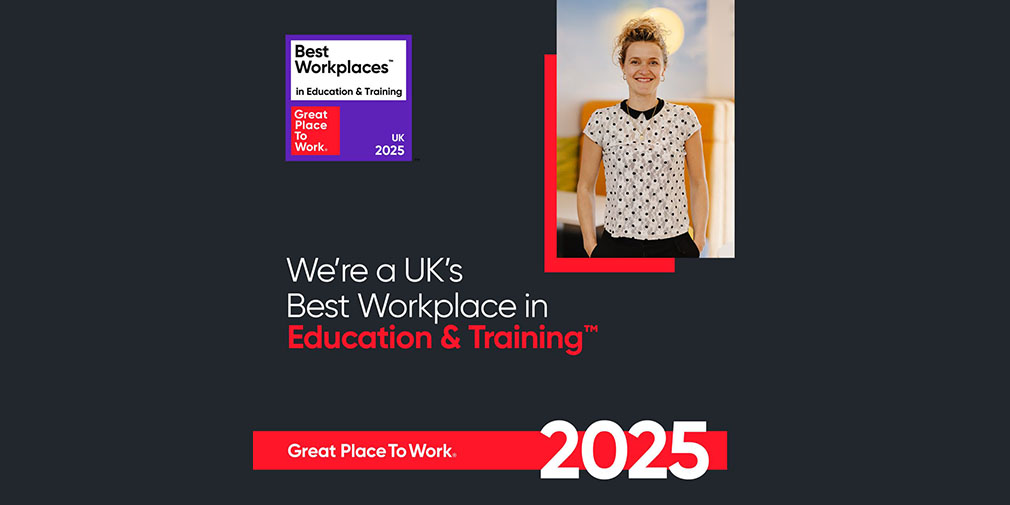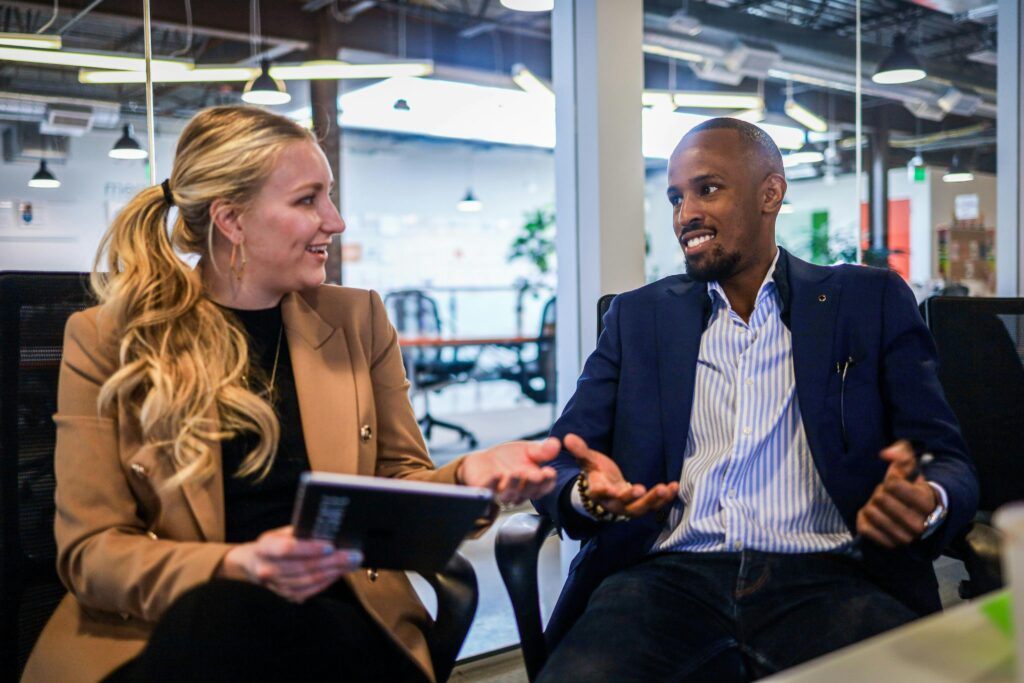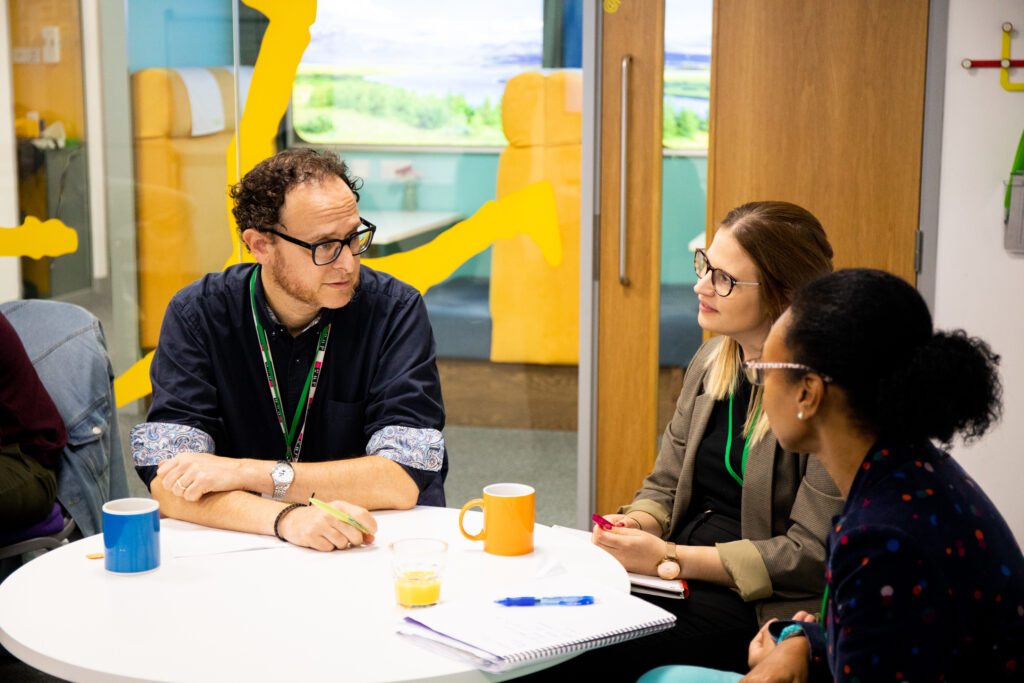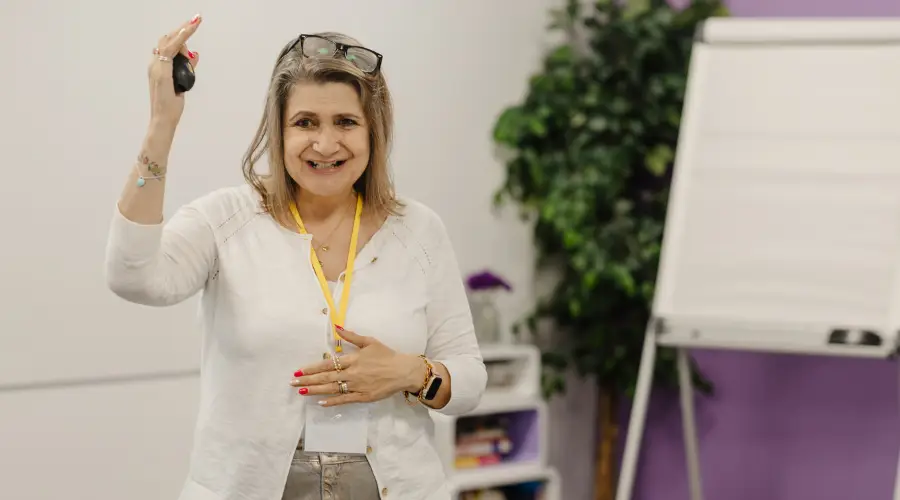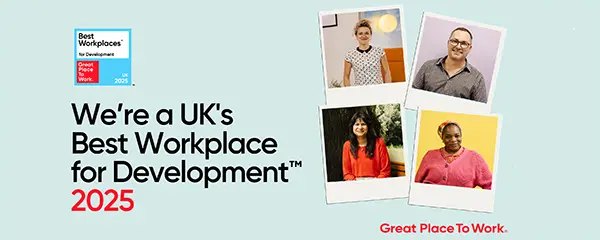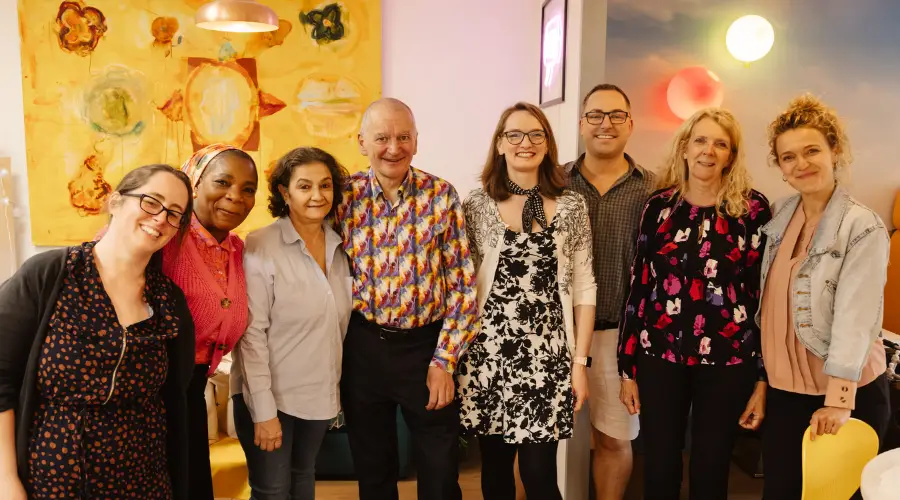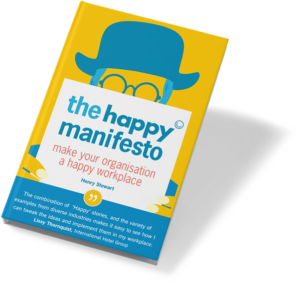Gore’s been around since – I’ll do the first slides, they’re only pictures anyway – we’ve been around since ’58 and started in the basement of Bill and Vieve Gore’s house. He was – middle aged, I guess – he had three kids at college. He worked on PTFE and relatively new material that was invented maybe like six or seven years before that. In the first six weeks of that material, every single property about it was known. We’ve been leveraging that material ever since in different applications of that six weeks of knowledge. He had an idea for it, he worked at DuPont, he went to DuPont and said “I think it can do this” and DuPont goes, “We’re not bothered”. He went again and said “We really should do this, it’s really good” and they go, “We’re really not bothered”. And he went again and finally the guy said “Look, why don’t you just leave and go and do it yourself because we’re not interested,” so he left. He says one-off opportunity, he left and started to work in his basement on 1st January 1958.
This is Bill and Vieve Gore and this is their basement. The first product they were trying to make was actually a ribbon cable. So back in ‘58 there was a market, computers were starting to be built, IBM had a need, and the way they did cables up until that point was pretty antiquated – big, you couldn’t fold them, they had a very large radius. And the idea that Bill had was he could use PTFE as an insulator and create a ribbon cable which would allow you to connect these things in a much smaller space. And he built his first ribbon cable in the basement of his house using a mandrill from his wife’s laundry, some pans from her kitchen and it went from there basically. The first product was a ribbon cable and we still have an electronic products division.
We are around the world now both in terms of manufacturing sites and sales offices. We are 10,000+ people and we are over $3 billion in sales in a very diverse range of products. I’m not going to go through that.
But we are still privately-held. Privately-held means the family still own the business but the employees – every single employee owns a bit of the business too, so we’re an employee ownership organisation.
That gives us a lot of benefit in the sense that: one, you want to come to work because it’s your money you’re investing, not only your time, so there’s a motivational piece as being an associate and we’re all associates.
But the other piece about it is we’re not all pandering to some 25-year-old on a computer in a financial office telling us whether we’ve done a good job or not. We can make decisions and choices, and some of you are in a luxurious position to be able to do that too; some of you probably aren’t. But it’s very important for us. It’s about being a great place to work.
We’ve been recognised multiple times – I think we’re the third best workplace in Europe as a whole. We no longer do The Sunday Times although that is an excellent measure of engagement so if you want a measure of engagement statistically – and Gore is full of scientists, we’re all flipping PHDs and doctors and stuff – so if you want a statistical measure, The Sunday Times is a great way of measuring actual real engagement.
We’re recognised in all of the countries that we serve, and one of the only ones that’s been in the Fortune 100 Best Companies in the US since [1984]. I think there’s only three or four companies that have been in it every year and we are there. So that’s what we try to do – that’s an indication of [and] reflects our effort internally [at] Gore.
We’re recognised for innovation as well. One of the pieces – we’re a manufacturing company so it’s about innovation. So you can’t be a successful business unless you innovate, so we’re actually recognised for innovation and diversity of our products is part of that. But I would argue that’s because of the culture that we run. It happens. OK?
I started off saying it was all about technology – it is all about technology. It’s at the heart of everything we do. If we haven’t got a product or a means or a science behind selling something, we don’t feel like we’re in the right business, and we’ll pull out of that business. So it’s about having a creative, unique solution which is about understanding the market, undersigning the technical challenge and then delivering something that adds real value and benefit.
At the end of the day, as a company we’re committed to fitness for use so whatever we produce needs to do what it says on the tin, so I’m glad so many people put their hands up for Gore-Tex. One of the few things you can do with Gore-Tex is you can actually wash it and it will still be waterproof afterwards. If you haven’t got Gore-Tex and you’ve washed your jacket – hard luck: it’s probably not waterproof any more. It’s about fitness for use and realisation just in a simple Gore-Tex jacket or cycling jacket is you’re going to want to wash it because it gets really smelly.
So guess what: the products need to maintain their performance. And if we’re building something to go in a space shuttle or a space suit or an aerospace or a cable or something that’s going into a Boeing or even the little filter that’s in your car headlights that stops them steaming up, that allows some movement of gas – it needs to work. And that’s what we call fitness for use.
It’s about standards, it’s about understanding that core principle and it’s about understanding our customer needs.
All of that was about who’s Gore so that you understood. Now we’re going to talk about the real stuff.
So, happy. Happy at work.
Marcus Buckingham would say happy is a way of living, it’s just a choice. You can choose to be happy; even if things are bad you can choose to be happy. All we strive to do is try and make it an easy choice. It’s not really: “I’m going to be happy, it’s really hard to be happy” – all you’re trying to do is: “Actually it feels pretty good, I can be happy here, this is alright, we could do that!” That’s what it’s about.
But what does that mean? And I would argue: it’s not about how tall you are to get your bill higher than anyone else because then you get a chance to succeed. Which is what penguins do, by the way, in case you were confused about what the penguin was trying to do: “I’m taller than you, look!”
It’s not about that. In fact, it’s the opposite of that, because to do that you’ve got to put someone down. You can be happy at the expense of someone else – that’s the opposite. Then, at best, you’ve got half that’s happy and half that’s unhappy. Well, who would go for a 50% success rate in a product launch? Why would you do that? Right? You want to be 100% happy, because that’s success.
So what is it that you have to peel away to get to everybody? Because everyone’s different. There’s only one thing and that’s human emotions.
So, two minutes, tables. I want one thing from your tables that makes you happy at work. You personally, happy at work. One thing from the tables that makes you happy at work.
Come on, it’s only one thing. You can find it! One thing.
Ok sum up. Ok, regather. Who’s going to volunteer? One thing at your work that makes you feel happier? Come on – otherwise I’ll go table by table. Yes, we have one.
[Trust.
Relationships.
Trust.
Feeling valued.
Carrot cake.]
Carrot cake! A piece of carrot cake and you’re happy.
It’s about delivering something, contribution.
[Freedom.]
Excellent. What links all those words together? If you listen to those words what would you sum up as the characterisation? What would you characterise them as?
[Empowerment.]
I would call them values. I think your company needs to have values. Values that you can connect you, irrespective of your role, irrespective of your country, irrespective of your background, irrespective of your upbringing. It’s got to connect to your human value.
Trust is a classic human value. It’s a gift word: you can’t buy trust. You can only be given it. You can either choose to accept it or not, but it’s a gift word. Gift words are really really important. Understanding what a gift word is and what does it mean is really really important. And especially if you’re in a leadership position, because gift words is all you should be handing out, otherwise you’re not a leader; you’re a manager, you’re a boss. Because leader is a position of gift given by followers and you can’t buy followers if they’re authentic.
Values-driven organisation, it needs to connect to human emotions because that’s the only thing that’s common to all human beings. Nothing else can access all. And you’ve got to use it to foster real engagement.
So if you haven’t got values, go write them down.
If you’ve probably got some values but you probably haven’t got them explicit and stated get them explicit and stated. Define them, debate them, argue them, see what they mean in practice.
I joined Gore in ’96, I’m a process engineer, electrical engineer by trade. In 1999 in August the plant manager of 220 people producing something like £80 million worth of kit every year called me into his office and he said: “John, I’m off to the States for nine months, I’ve asked the team, they want you to lead the plant.” I was 33 years old, I’d had a student for one summer. That was my managerial experience. We had a great time, that summer. And I looked at him and I said “Um, what the hell makes you think I can run the plant? I’ve got no experience in operations, production, vendor management, custom controls and all the other things that come with shipping products around the world. “Well the team think you can, and that’s all that matters.”
Right. This was a Wednesday, he disappeared on holiday for two weeks. The following two weeks he came back for a week and then he was gone. And I was in his office.
Now in Gore, we call that followership and I was appointed a leader by the team because he went and asked the team and I was a member of that team and they’d looked at me and said “No, we’ll follow John.” Now that’s a gift.
So in those two weeks I went and asked them, “Do you really think I can do this?” and it’s a gift. So leadership is a gift if you’ve got followership, so they followed. This was 1999.
In 2000 after a year it and been a complete and total disaster and I was confused. My head was spinning and I’d always been successful and as a manufacturing leader. There’s only three things you have to do, it’s a very simple job really, operations: don’t kill anybody, deliver your product on time and meet your financial forecast.
I hadn’t killed anybody but we’d had some incidents. We’d failed, pretty much consistently through the whole year to deliver our products on time, we had all sorts of different vendor supply issues, our own system issues, different types of things, and I’d thrown a bucket load of money to try and recover the situation.
So after a year I hadn’t killed anybody but I’d failed on the other two things. And I was sat there going: “I’ll just go back to being a technical engineer, sit in the corner and program machines, it’ll be fine.”
And then I went to the Leadership Trust for a conference and it was called the Head and Heart of Leadership and I was so confused going to that conference about should I quit, should I not, I had a young family, what should I do, can I go back to just being an engineer.
In that conference I understood something about leadership, the Head and Heart of Leadership is about IQ and EQ. I’d never heard that term before – emotional quotient – and a lightbulb went on in my head and the lightbulb was, other people saw in me things I didn’t know existed. You’ve got to get self-aware. You’ve got to understand how you make people feel and how you impact on them, and it’s about human emotions.
And I came back, I didn’t quit, I completely changed, and then in 2004 we won Best Company to Work for in the UK which was the proudest moment, standing up and taking that award.
It’s about engagement and where does that start from?
It’s about the belief in the individual. We’ve got a core value which is belief in the individual and we believe that everybody walking into work wants to do a good job. We place trust immediately you walk in the door. So if someone comes into the door and they want to know what the financial situation is, as a leader I’ll say: “Yeah, this is it, this is where we’re at.” We’re very open with information, we trust people. Because if you haven’t got the information, how can you make decisions?
It encourages this self-direction but it also allows associates to participate in defining their own commitments.
We trust people to create their own job descriptions. We don’t have job descriptions; you write your own every year. What you’re actually writing is a solemn promise to deliver what you write down and saying what you’re going to do.
Now it’s done in a discussion, and the discussion is around this: It’s about your interest and motivation, it’s about your skills and experience, and it’s about what the current business need is. You’ve got to balance all three, and then you get a passionate associate in the middle. Because the business need delivers contribution, the skills and experience they have, they’re just using the toolset that comes with them, and you’re motivating them because they’re interested in the topic. If you can get all three, everyone can be happy. Our leaders, managers, our team leaders, all they’re striving to do is find places for our associates that meet those three criteria on a day to day running basis.
So, this comes with some criteria as well, right? You’ve got to be clear about what your business need is. If you haven’t got a clue what your business is doing, you haven’t got a clue where you want it to go – really hard to explain what that is. You need to know where your business is going, because otherwise you can’t have that conversation. You should know this, and your associates should know this, and if they don’t know this, they need to go find out, and you should offer training and help for them to go and do that self-appraisal, self-awareness, appreciation of what they do, and can do, and are interested in doing. If you can do that, at least a higher level of engagement, which The Sunday Times is the best measure of – did I say that before? Yeah. For those engineers in here, you can go out and measure it, you can track it, and you can do SPC on it if you want.
So what have these in common? Two minutes at your tables and for those who haven’t read First, Break All the Rules by Marcus Buckingham, it’s a Gallup poll that tried to understand what the best companies in the world did to be successful. So what does Leicester City and First, Break All the Rules have in common? Hopefully, most of you have read it – if not, imagine what the top companies in the world do – or just think about Leicester. So – a minute, because we’re running on. A minute at your tables. What have they got in common?
OK, let’s start to wrap this up. It takes £57 million and a good manager to win the Premiership, who’d have thought it. So, any ideas?
[quiet responses]
Know what you should be doing. Classic. Next one.
[quiet response]
Being good enough, not the best, being good enough is enough.
[quiet response]
Fostering belief and team spirit around what’s possible. Yes. OK.
So, this is mine: focus your team on strengths, not working on weaknesses.
Each of those players in Leicester City know what they’re good at and guess what – they just improve and improve and improve on that strength. You’re not trying to make a defender an attacker or an attacker a defender – it’s about what role they play; they’re very clear about that role, so it’s a commitment and what’s expected of you, what job are you expected to be doing and what is the team expecting you to do as part of that team?
I’m a Liverpool fan, so when you’ve got someone like Jordan Henderson, you know he’s going to run all day for the whole of the team. You’re not quite sure about Benteke this year – is he going to run, is he not going to run? You’re not quite sure. When that gets and invades in the team, when you’re not quite sure, that belief dissipates.
So in Gore, when we talk about a commitment, and it’s a core value of ours, it’s a personal, heartfelt commitment to deliver.
There is an expectation that you will deliver what you say you’re going to deliver; there is a trust you will deliver. And there’s a mechanism that if you don’t, the team’s going to cut your head off. There’s got to be a mechanism that adjusts, right? With safety nets, obviously. But there’s got to be consequences of not delivering, and that’s not a one-to-one discussion with your boss. That’s a one-to-one discussion with all of your teammates. And it’s an encouragement of your teammates to tell you whether you’re delivering on what you said you were going to deliver on a day to day basis.
It’s creating an environment of awareness and appreciation and expectation and it’s OK to do that. It’s OK to say in a meeting, “No I’m not going to do that, because I haven’t taken that commitment.” And it’s uncomfortable, because people might expect you to do it – it’s uncomfortable.
But you’ve got to be authentic to what you can do; the worst thing you can do is take on more and deliver less, because that damages you in the eyes of the team, it damages the company in stuff that’s not getting done – that’s the worst case you can get to.
How many people suffer that on a daily basis, that they’ve taken on too much or that expectations are too high; that there’s no way they can deliver it. Then they stay all God hours in the day to recover it and guess what? You don’t do it very well, even though you’re spending hours and hours and hours doing it. It’s about being clear about what the commitment is and delivering that commitment.
The other one which is in the book: if your company answers, or if the associates in your company answer strongly that they have a friend, a personal heartfelt friend at work, you will do better as a business. Having a friend at work is very important. Now, that Leicester team – appears to me they’re all mates, real mates. I don’t think that’s true of many Premier League football teams.
Successful teams are exactly that: a team that contributes together. It’s about the balance of all the strengths of the team balanced together. You’ve got to get to a level of self-awareness to understand what that even feels like. When you’re in a team, when it’s balanced well, you can feel it. You can feel it happening. Things happen that surprise you every day: “How the hell did that happen? How did we get that done? We did that? Wow!” – that’s what it feels like.
So, would you like to work for a company (and I’m not saying you should work for us) but would you like to come to work for a company where each make their own commitments and write it down, so you haven’t got a job description, you write your own? Judgement of your contribution to the success of the business is made by your peers, not by your boss or leader? Yeah, they have a part to play, but if you’re in a team of ten, it’s the whole team of ten including the leader that ranks your contribution, says whether you’ve done a good job or not.
There are no job descriptions, titles or grade/salary structure. One of the issues you get in some companies is there’s a ‘management’ structure and there’s the ‘other’ structure, and if you stay in the ‘other’ structure you’ve got no chance of getting the car or the foreign assignment or any of the things that come with this other structure. We don’t have any structures; it’s just about you, and what you contribute, and whether you’re useful.
Where qualifications are secondary to passion about getting stuff done. I’m a great example of that. I had no experience. If I’d gone for an interview to lead a plant of 200 people, they wouldn’t even have looked at the CV. What they saw in me I didn’t know myself and it took me a journey to discover it. But they saw something, and they were willing to trust in the individual to see it succeed.
So it’s not about qualifications, it’s not about the IQ world, it’s about the EQ world. You need enough IQ but anyway it starts to deteriorate after 25 right? Why the hell would you measure that? Hiring someone when they’re in their 50s? Are you going to say “Well what were you like when you were 25? On this IQ test that we’ve just made you do”? Why is that relevant even? You’ve got to have enough.
EQ grows throughout your life because it comes with experience, it comes with understanding, it comes with self-awareness, and it comes with appreciation of human emotions and how that effects work – so why wouldn’t you just measure that?
Where promotion is decided by yourself. So because we take our own commitments, what is a promotion? It’s additional commitments, is it not? You get broader responsibility or accountability or you take ownership for something else. That’s promotion. So because we take our own commitments we can promote ourselves every day, every year, at every opportunity. You’ve got to balance that around the whole work/life balance and whether you can deliver it or not, but self-promotion is how we grown in Gore and actually one of our core beliefs is a freedom principal: freedom to grow and develop and help others to grow and develop.
So we’re not going to stop anybody going outside the department and contributing to another team that’s not directly linked to their day job, because they’re growing and they’re promoting and they’re learning. We’re going to hold them to that core commitment and taken and delivering it, but if they go off and do something else that helps another team and still deliver that, they just grew.
We just got something else done without having to hire somebody and without doing a job description, without writing and pulling somebody in and getting them on-boarded and spending the money training them before they’re even useful – they’re useful already. Why wouldn’t you do that? Why would you have barriers in the infrastructure of your company that stops people delivering good value? Why would you do that? That just makes no sense.
As Henry said, it’s common sense. But what do we do? We go get a consultant who says “you’ve got to put people in boxes and you’ve got to find what they’ve got to do and they’ve got to sit in this room and you have this organisational structure and you’ve got to do this and this is what they do and here’s the book on how they do it.” What the hell do they know about your business?
We’ll encourage everyone to gain promotion every day – so I sort of covered that. So that’s about the individual connecting to the human emotion of being a person and what you need to contribute, then it’s about organisational structure.
So we organise around small teams. A small team is 8-10 people. You get bigger than that, it’s not a small team, it’s a bigger team, then you’ve got other problems. So it’s about focusing opportunities around individual businesses, whether that be a product or whether that be an initiative.
So, my existing state: I’m in a small team of 6 people, and we’re driving a harmonisation effort to standardise our manufacturing execution business process across the enterprise. There’s 6 of us to do that. We have a team of 125 people involved, but there’s a core team of 6. We’ve got individual project teams of 8 set up in certain areas and certain focus points so that they’re clear about commitment, they’re clear about deliver, they know which piece they’re delivering as part of this bigger, broader programme; and us, as part of a small, knowing, trusting team, can have those conversations that we need to have in a trusting environment without any corridor conversations – not least of all, we’re spread all around the world so we’re not even in the same location.
So it encourages this collaboration piece, it’s about the shared ownership of delivering of those results and your total commitment should add up to the commitment of the team that you’re in to deliver. So your commitment is a slice of the cake that gets delivered in that whole, and it generates faster and knowledge-based decisions, because that team is empowered to run with what they’ve got. They might ask for help – you always need help from other teams, or from other coaching or leadership or some other experienced associates – but otherwise you’re expected to deliver as a team. That leads to empowered teams.
So – engagement of the sole, the individual person. The empowerment of teams to make decisions and act quickly.
The balance of that is, we’re all in the same boat. We are an enterprise of $3 billion, we own big brands, we’ve generated big brands; our brands are not owned by a company. Brands are owned by the consumer. Anyone can destroy a brand, because all you have to do is sow a seed of doubt in the consumer and the brand evaporates and its value’s gone. Imagine that!
The other piece is, we’re all in the same boat – as an enterprise, we’re 10,000 associates around the world, we’re in four different divisions, we’re all connected to the Gore brand and we’re all connected to our success as an enterprise. Any team that tries to do something that potentially puts that enterprise at risk, we would call that waterline and we would have a discussion about is it worth it or not. There’s this counterbalance; there’s small teams that are going out and doing stuff in their remit and their view of their world which is rightly blinkered, but there’s also the balance of: “Yeah, but you’re out of the enterprise, how does that fit? Or does it not fit?”
And that’s the concept – we’re all in the same boat. And if you drill a hole underneath the waterline we’re all at risk of sinking. So let’s have a discussion. It might be the only solution and we’re going to drill it, but let’s have a discussion before we drill it.
We’re able to take this long-term view because we’re an employee-owned company which allows us to invest in the future. Gore-Tex fabrics took 20 years before it turned a profit: most companies would have killed it way before then. The reason it took 20 years is because the market didn’t know it needed it so we had to educate a whole community of people to go: “This is good stuff!” You don’t know what you’re missing because you’ve never experienced it before. So we had to create the market demand because there wasn’t an awareness that the product actually had value. That took us 20 years.
But it also allows time for innovation. Sometimes we’ve created something and it’s stayed on the shelf for 10 years and then we go: “Ah, it’s right, now!” and then we pull it off the shelf because we can deliver a product that the market needs now. So it’s about when and where and how and making those choices.
Gore is special (I’m a bit biased, I’ve been there 20 years, I’ve got a big pension and I own some shares) but people do come to work expecting to do a good job. In my experience everybody wants to do a good job, they want to feel worth, it’s a human emotion. Too many companies kill that off as soon as you walk in the door. And they say, you’re only going to give worth for what I believe is worth, not what you believe is worth. People come to work expecting to be able to contribute. They want to leverage their strengths, their core competencies, their experiences, their knowledge, the stuff they’ve gained through the years of hard work.
“Communicate! Communicate! Communicate” is not “Tell! Tell! Tell!”: it’s different. Communication is 2-way, telling is 1-way. It’s got to be two-way.
Involvement leads to alignment. Alignment and empowerment leads to engagement. Engagement leads to problem ownership and innovation. If you want the team to own the problems, they’ve got to be engaged in the solution. If you want to be innovative you’ve got to allow a voice for other peoples’ ideas to show. But it comes from (here), it comes from (here), and together it leads to (here).
So, happy at Gore: here’s my definition. It’s not complete, I could do some more; I did it this morning over breakfast.
- Clarity of commitment that’s written by you.
- Ability to use your strengths – so, you’re in your sweet spot.
- Rewards decided by your peers – so the team that you respect and you work for and you help deliver things judge whether you’ve done a good job or not.
- Working in teams that know and trust each other; hopefully you’ve got a good friend that’s in there.
- And most importantly, a voice that is heard. If you don’t have a voice, what are you in the meeting for? Why don’t you just read the meeting notes? If it’s a communication of “this is what it’s going to be” then just get the dictum afterwards. If you’re in a meeting, I’m expecting a voice. I want to know your opinion.
Gore culture is about people, it’s about strong embedded values, it starts from that “what do we want to be as an organisation?” as a group of people it’s got to connect to human emotion. It’s about talented associates and we want the most diverse group of people we can possibly get. So there is not a recipe for a Gore associate other than it needs to be a human being. We work in a diverse world and if we haven’t got opinions that are diverse in house, how are we going to be successful in the external world? And if you’ve connected to the human being, what does it matter if you’re Japanese, Chinese, from California or New York? Actually, we’re all the same.
A consistent set of objectives and guidelines, clarity from leadership around where we’re going, why we’re going, what does it mean, spun up from the teams. Not pushed down from the top.
And you don’t need a lot of rules and hierarchy. We’re a complete flat structure, I can phone up our CEO tomorrow and she’ll answer the call. If one of our production team phoned her up, she’d answer the call. It’s not about that. She’s not making the decisions; she’s facilitating the process. Leaders facilitate. They state the problem; they don’t decide solutions. They facilitate the problem ownership and resolution. They don’t go: “This is my idea, this is what we’re doing, get on with it”, because that doesn’t include involvement.
So that’s it: that’s Gore.
Questions & Answers:
Q: How do you decide on investment between the units? If one thing is profitable in one unit would that unit agree to invest in another unit? Or is that done centrally?
It’s done individually and jointly. So the big investments are done with the enterprise leadership team, so our divisional leaders sit there and say ‘so where are we going to play, where are we going to focus on?’ but all the individual business run on their own set of accounts to some degree, based on how successful and how much money. If you’re not making a lot of money, how can you invest, unless you’ve got a good reason to do it, and then the Enterprise will go “let’s invest.” So it’s both and not to certain levels. It’s complicated.
Q: So is there a hierarchy between the units in a sense then, or between Enterprise and the other units?
No, it’s a team. So we have three Enterprise leaders, and their job is to facilitate the divisional leadership team around what Enterprise needs, and the divisional team has three leaders that are facilitating the business units within their teams and what does that division need to do. It’s a two way up and down process. Where does the Enterprise go, how does that fit with the division? What does the Division need to do to be successful business? So we don’t owe anybody any money, we’ve never owed anybody any money, it’s all our own money that we invest. We don’t borrow to invest.
Q: Thinking about what you were saying about IQ and EQ, have you got any tips for recruitment? How do you think about recruitment at Gore? How do you find the right people?
One word: Character. Forget the rest.
Q: So is that just a feeling, or do you measure it?
So what sort of character are they? Are they authentic, are they going to deliver commitments, are they going to do what they say they’re going to do, have they got a track record of doing what they say they’re going to do? Can you prove that? Or are they saying “look I’ve done all this” and their CV is flowered all over the place, and yeah you were involved in the team but you didn’t actually do that did you? It’s about character.
I once hired a guy and had a challenge in the interview because I couldn’t get him to say anything other than “we.” I wanted him to say “I”. At least once. And I couldn’t do it, I spent an hour trying to get him to say “I”. I said “so what did you do?” He said “we did, we did, we did.” And it was just we, we, we, we. He was about the team. It was about what the team delivered, it was not about him, and he was embarrassed to have to have an interview. It’s about character.
Q: You said that you went to the Innovation after your first year of kind of failed leadership and you came away feeling inspired, what was the biggest change you made or the biggest discovery you made when you came away from that?
So that was misinterpretation, on my part. Because they had wanted me as the leader, I had taken that as a door in to interfere with their processes. And I had. But I told you, I didn’t know anything about it. Understanding the power of being a leader and what your voice says, was part of that learning journey, and I realise that was completely wrong, I needed to step out, and I just needed to listen, not play. That was the change I made. I switched around the conversations completely and I remember I actually extracted myself from many of the meetings and said “look, I’m here, bring me in when you need me.”
I learnt that because I was away on holiday for two weeks and I came back, and one of my goals is that when I’m away on holiday I switch everything off and I want a team that doesn’t need me, because then I’ve really got a team. Whether a player drops out injured, they still have a good team. Should be the same as a leader. And I came back and there was a disaster in the plant, they had all sorts of production problems and they had this going on, that going on, and I sat in the first production meeting since I got back, and I came in and I’m listening and there’s this, and there’s action plans, and then I was just involved in the moment, and I go “well, have you thought about…” and just threw this idea in. They had this plan that they were working on and I just scuppered the whole plan and I didn’t know I’d done it. So they just stopped the plan and they worked with my idea, because I’d come in, and I left the meeting, went back to my office, and the Production Leader came storming in, slams the door, “do you know what you’ve done?!” I’m like, I’m just back from holiday, I just got back. “You’ve just scuppered flipping two weeks work!” … oh okay, yeah.
Self-awareness. One-to-one feedback, immediate feedback. Other companies, they might just have left that and gone “oh, yeah, what a w*nker he is”, but it wasn’t. The guy came and gave me immediate feedback and I went and corrected it. “Look, you’ve got a plan, run with your plan, don’t let me destroy your plan.” So the recognition of leadership and what your voice counts as is about that self-awareness piece, so be very careful about what you say and when you say it.
Q: Do you often get CC’d on emails? And what I mean by that is, do you think your day is different to those in a similar role in other organisations because of the more common structure that you’ve got?
I guess I’ve never been in another organisation with email. That’s a scary thought isn’t it, really! So did we have email back in those days, 20 years ago? I think we did, but it wasn’t used very much.
Email is a challenge, but again, where does that start? So if people start sending you emails and you haven’t told them to stop, it’s your fault, not theirs. It’s a bit like when you hand off to somebody and the people still come to you to ask the questions and make the decisions and the guidance and the coaching. If you sit there and you give the guidance and the coaching, you haven’t handed off. So you’ve got to sit there and say “Well, I’m sure Diane would want to know those thoughts, because she’s doing it now.” So if you don’t do that, then you self-generate your own problems. So that’s about authenticity.
I’ve heard various people, various leaders will say “well if I’m cc’d in I just don’t read it, I just delete it, I won’t even look at it – if it’s to ME, then someone’s asking ME a question and I’ll do something about it, if I’m cc’d in just for information, I’ll get the information somewhere else and I’ll just delete it.” You have to have a mechanism, and that comes with the confidence in the team making the right choices, so it’s an ‘and’ thing, it’s not an ‘either/or’ thing. And as you get a better team, you become less sensitive to what they’re doing, because you know they’re doing the right thing.
Q: You talk about not having a and also about allowing people to largely decide their own role and take on extra responsibilities, so how does your remunerations work in that environment, where people can go “well I’m deciding now that I want to do more and I want to do this” – how do you decide on the remuneration?
So we have a process that’s internally fair and externally competitive. So that’s our mantra. So the internally fair piece is that our teams rank each other’s contribution, that provides a set of data that says this person is at the top of the list in the eyes of the team and this person’s at the bottom. So then our salary will go against or our rewards will go against that list. So that’s the internally fair piece. So if you’re ranked highly, you’ll get a better payrise.
The external piece is, well, let’s see what job are they doing, and let’s do a comparison to an external and often we find difficulty there because it’s like, a bit of this, a bit of that and a bit of that, and that can be a bit complicated, but again it’s just externally competitive. We say right, for someone doing that sort of role it’s in this order, are we paying enough? And we’ll do that balance at that time.
So it’s internally fair, externally competitive.
Q: I was just wondering, has Gore always had this sort of ethos or have you had to actively work to create this kind of company culture?
Both. It’s an ‘and’ again.
So when Bill set up the company, he had a clear view of the world that he wanted to run his company as, and it was modelled based on some background reading around X and Y theory, but mostly based on his experience in a Dupont lab during the War, where all the financial controls and the management controls came out, and it was like “find something to win the War.” And the innovation just took a step up, people were killing projects because they weren’t going anywhere, they didn’t need to process to do it, they just stopped doing it and started doing something else, and he goes “that’s what I want in my company.”
But it’s taken a lot of work to formalise that, and we probably didn’t state our values until probably the early 70s, when he was asking on-board associates, and it was in his head but it wasn’t explicit, and he started writing them. So there’s writing from Bill, ‘this is what it means’, so it’s been worked on.
Q: So you said that teams rank their peers – what is that like in terms of internal dynamics, do they all know who’s ranked who and where?
No.
Q: But then do people wonder, oh I wonder who put me there, why am I at the bottom? How does that work?
So checks and balances. We’ve got leaders, they’re only leaders because they’re followed. Part of the process is, is the leader at the top of the tree as perceived by the team? We take that as an indication that the team’s got follow-ship of the leader, so the leader’s in that discussion. Salary is confidential in Gore, we can’t tell anyone else our salary, because we don’t have any grade structure, it’s unique to us. The reason it’s highly confidential, is because we don’t want to create a hierarchy. So the last thing I want to hear in a conversation or in a meeting, is “well it’s your job because you get paid more than me.” Now that creates a hierarchy in people’s heads and we want to remove that hierarchy from people’s heads, we don’t want a hierarchy, we want people to grow and change the shape they can personally, they’ve got their own shape, and unfortunately money overrides that as a human emotion. So we keep it confidential.
The ranking is confidential too, to a smaller group of leaders that look at it. So the leader that’s on that team won’t see his ranking, and there’ll be a team of three, the two others will see his ranking, and would need to take action. It’s back to the trust and belief of the individual. So the associates contributing to that process are trusting that the leaders that are on that committee take the right action based on the data they supply.
